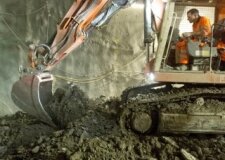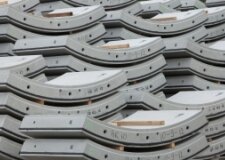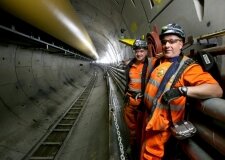
Projects
Western Tunnels
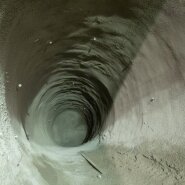
BFK and Western Tunnels
BFK is a joint venture comprising BAM Nuttall, Ferrovial and Kier and was awarded the Crossrail C300/410 contract in January 2011. We are employed to undertake all tunnelling, settlement monitoring and mitigation works, civil, structural, utility diversions and temporary works design for the Western Tunnels and Stations contract for the £15bn Crossrail project.
The Crossrail route will link existing Network Rail services from Maidenhead and Heathrow in the west and Shenfield and Abbeywood to the east, with new underground stations at Paddington, Bond Street, Tottenham Court Road, Farringdon, Liverpool Street, Whitechapel, Canary Wharf and Woolwich. It has been described at the largest infrastructure project in Europe.
Crossrail’s Western Tunnels Contract is one of the largest of the Crossrail contracts. At peak production the TBMs can each advance up to 40 metres in a day excavating in excess of 3,000 tonnes and installing 575 tonnes of concrete tunnel lining rings. 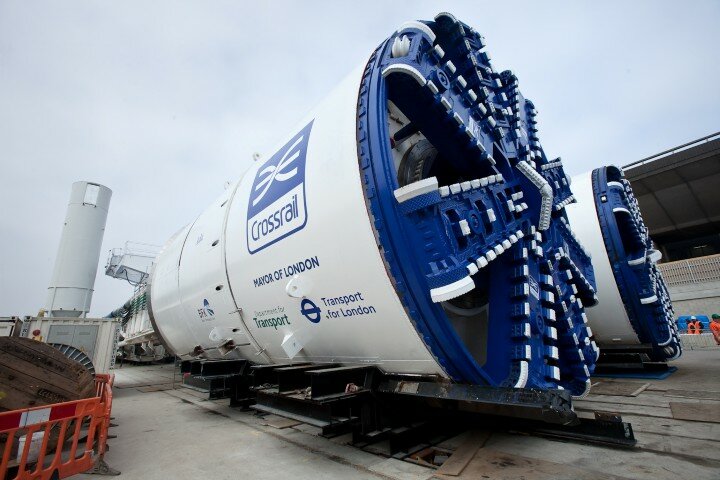
Western Tunnels
The western tunnels (C300/410) work comprises two 6.2m internal diameter bored tunnels, each 6.5km long between the Royal Oak portal, which is west of Paddington Station, and Farringdon Station, and the sprayed concrete lining (SCL) station tunnels at Bond Street (BOS) and Tottenham Court Road (TCR) and the Fisher Street (FS) cross over tunnel, including ticket hall shaft construction at TCR. The western tunnel drive, between Royal Oak and Farringdon is one of five drives and will be the point at which the existing Network Rail services on the western section of the route enter the tunnels under central London.
Extensive settlement monitoring and mitigation measures are included using techniques such as compensation grouting, from 13 number, 15m deep, 4.5m diameter shafts located in the BOS, TCR and FS areas in the centre of London.
The running tunnels are being driven with two purpose built 7.1m diameter Earth Pressure Balance (EPB) tunnelling machines supplied by Herrenknecht. These giant 1,000 tonne tunnel boring machines (TBMs) are making their way between existing underground lines, sewers, utility tunnels and building foundations from station to station at depths of up to 40m. The TBMs driving the western tunnel, Phyllis and Ada, began tunnelling from Royal Oak in May 2012 towards Farringdon.
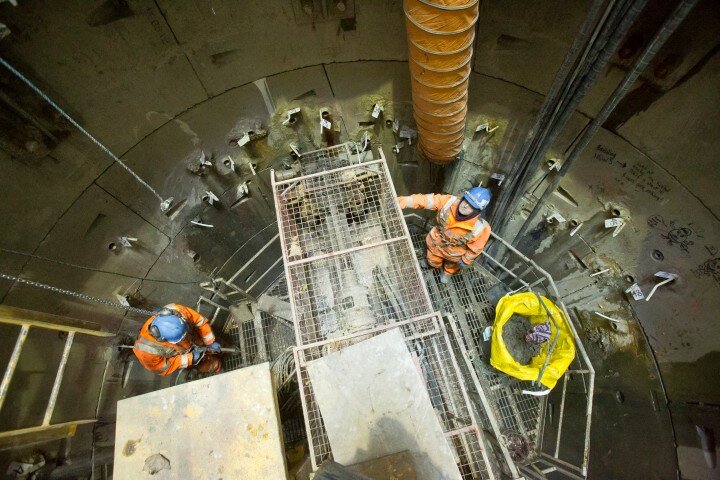
The tunnels are being lined with precast concrete fibre reinforced concrete segments manufactured by BFK in a tunnel segment manufacturing facility at Old Oak Common. Our purpose built factory employs about 60 people and began producing segments in February 2012. The factory produces up to 200 segments per day and includes a laboratory to test the quality of the concrete to ensure that the segments have a 120 year life. The factory has been built specifically for the production of Crossrail’s tunnel segments on a site that will become home to a major Crossrail train depot once segment production is completed. BFK will manufacture more than 75,000 tunnel segments at the Old Oak Common site.
The concrete segments are transported by tunnel locomotives into the tunnels and loaded onto the 1,000 tonne mobile underground tunnel factory (the TBM). As the 140 metre long TBM advances forward, the precast concrete segments are built into 23 tonne rings to line the tunnels behind the TBM cutter head.
In addition to the running tunnels, the Contract also includes the construction of the station platform tunnels, concourses and associated cross passages and escalator tunnels all constructed in Sprayed Concrete Lining (SCL) at Bond Street (BOS) and Tottenham Court Road (TCR). At Fisher Street, we are also constructing an SCL running tunnel, rail cross over for trains and an access/ventilation shaft.
Enabling works include the diversion of utility services in the areas of the Compensation grout shafts and at other areas as part of the settlement mitigation works.
More than 1 million tonnes of spoil will be excavated during the tunnelling construction of the Western Tunnel Drive between Royal Oak portal and Farringdon station.
Excavated material (spoil) from the tunnelling operations is transported from the TBMs via underground conveyor systems to a purpose built rail head at the Westbourne Park site to the west of the Royal Oak tunnel portal site. The spoil is then loaded onto freight trains for transportation to a transfer station at Northfleet in Kent. The primary purpose of the Northfleet site is to receive excavated material by rail and briefly store it before loading onto ships for delivery to a land reclamation site at Wallasea Island, Essex.
Northfleet was chosen as a transfer station because it is located on the River Thames with deep water wharfage and disused rail links to the National Rail network. This allows Crossrail the ability to transfer excavated material from the new tunnels by rail and then transfer on to the ship thus removing at least 50,000 lorry journeys from central London roads as well as ensuring its use for environmental improvements.
